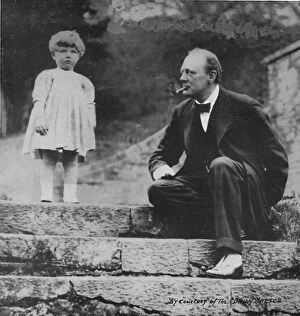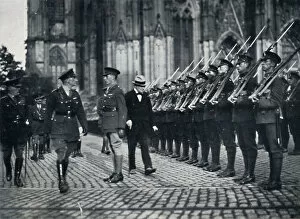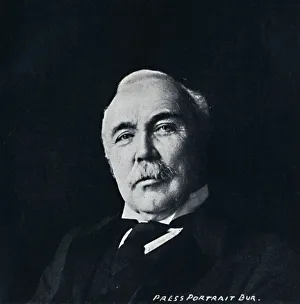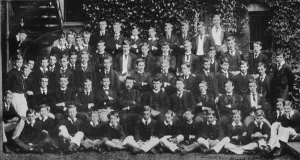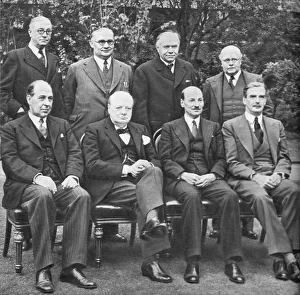Churchill Collection (page 19)
"Churchill: The Indomitable Leader Who Inspired a Nation" In 1942, amidst the turmoil of World War II, Winston Churchill stood tall, making his famous V for Victory sign
All Professionally Made to Order for Quick Shipping
"Churchill: The Indomitable Leader Who Inspired a Nation" In 1942, amidst the turmoil of World War II, Winston Churchill stood tall, making his famous V for Victory sign. This iconic gesture became a symbol of hope and resilience for millions around the world. A powerful WW2 poster boldly proclaimed "We shall not flag, " echoing Churchill's unwavering determination to never surrender. His speeches resonated deeply with the British people, inspiring them to stand strong in the face of adversity. Churchill's praise for RAF pilots showcased his admiration for their bravery and skill. He recognized their crucial role in defending Britain against enemy attacks and hailed them as true heroes. Whether it was giving the V sign or bricklaying during wartime reconstruction efforts, Churchill embodied the spirit of Britain. His actions spoke volumes about his dedication to rebuilding a nation torn apart by war. The words "Deserve Victory 1940" encapsulated Churchill's belief that victory could only be achieved through hard work and sacrifice. He rallied his countrymen to give their all in pursuit of triumph over tyranny. A wartime poster immortalized Churchills' famous words: "I have nothing to offer but blood, toil, tears and sweat. " These profound sentiments reflected his willingness to endure any hardship necessary for victory. Even in moments of respite at Chartwell, Kent, Churchill donned his Siren Suit - a symbol of readiness should danger strike again. It exemplified his constant vigilance and commitment to protecting his beloved homeland. From leading troops during the Sidney Street Siege in East London to guiding an entire nation through its darkest hours, Winston Churchill emerged as an extraordinary leader who shaped history. His indomitable spirit continues to inspire generations today.




















